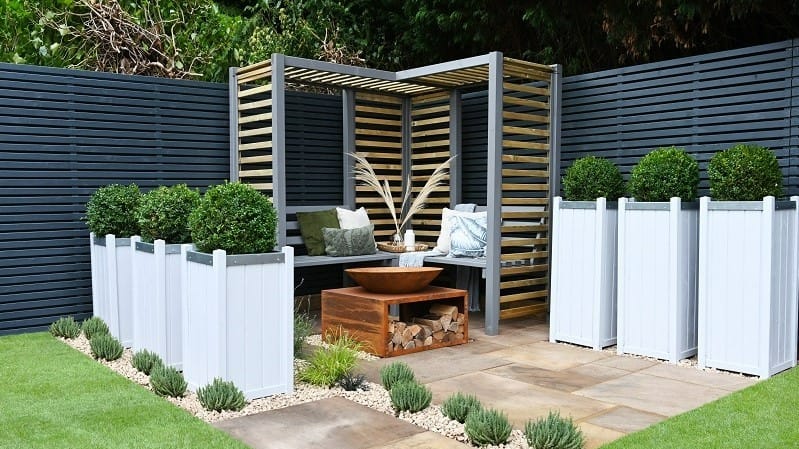
Preparing and maintaining a kitchen garden or allotment
Published on April 21, 2023
Posted in How To
by MKM
5 min read
Garden and food writer Rekha Mistry, author of Rekha's Kitchen Garden provides her advice for preparing and maintaining a kitchen garden or allotment.
Preparing a kitchen garden
When you’re in the planning stages of creating a new kitchen garden, garden or allotment, or you’re tending to a piece of land that has been neglected for a while, the most daunting thought is often ‘where do I begin?!. Approach this task in sections. Clear and complete each section at a time, rather than everything all at once!
Map out the garden
First thing to do is roughly map out the garden and label what direction the garden is facing. This will help orientate the beds position when creating or building. But first the land has to be cleared of any bramble and unruly creeping weeds. Before taking down any unwanted old established trees. It is best to check with the local council if under a protective variety. The last thing anyone wants is a court injunction notice.
Once the blank surface has been achieved a greenhouse, vegetable beds, dedicated fruit sections and composting areas need to be mapped out and created. Home gardens are perfect spaces for kitchen gardens because they are enclosed spaces with minimum wind to cause damage. Allotment sites aren’t always so lucky. Strong winds can cause a lot of damage to greenhouses, fruit trees and even tall varieties of vegetables. That said, there are still wonderful harvests to be had on allotment sites.
The key, especially for north-facing grow-spaces, is to provide wind break shelters like fence panels or semi permeable barriers by growing hedging to reduce the wind gusts. Fruit trees benefit from such shelter structures. In spring, when fruit trees are in blossom, these wind breakers help create calm surroundings allowing the flowers to stay intact, and not to be blown away. More importantly, wind breaks help achieve successful pollination by visiting bees. When fruit trees aren’t sheltered, windy conditions make it a little difficult for the bees and other pollinators to land on flower petals, resulting in a smaller fruit harvest.
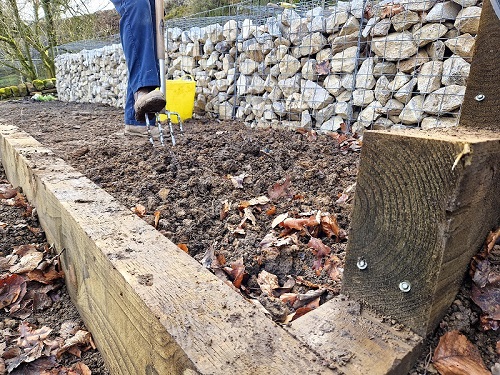
Vegetable or fruit beds
When making the vegetable or fruit beds avoid making large beds. Width of no more than 1.5m is ideal so that beds can be accessed from the sides. This eliminates the need to step into and compact the newly dug or newly created treated sleepers raised beds. Also take care not to narrow the pathways between beds. 45-50cm spacing is ideal. This allows for a wheelbarrow to access beds with ease.
Composting areas should be positioned in a slightly shaded corner of the garden, with a bottomless base. This will help worms work their way up into the decaying matter. Greenhouse or sheds roofs are ideal structures to capture rain water. But if these buildings are not possible additions to the garden, simple shelter constructed over the compost bins with downpipes leading into the water-butt will help capture what every gardener calls rain in the summer months: liquid gold.
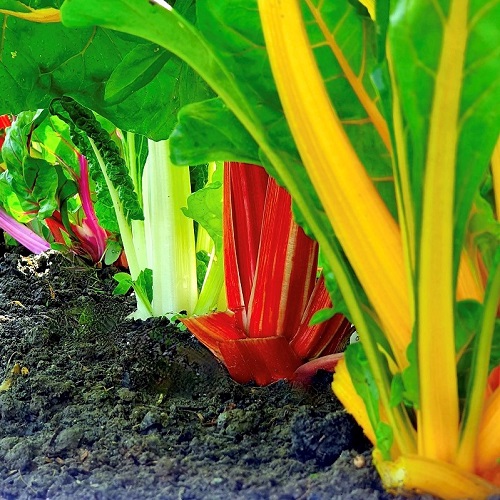
Maintaining a kitchen garden
Spring months
Spring months not only welcome new burgeoning life in vegetable seed trays in greenhouses; outdoor, weeds are also emerging! These early weeds are a good tell tale sign to say the outdoor soil is warming up. Best to knock and hoe them off before they take over the freshly prepared beds. Even through the summer months annual weeds will always want to be first in growth. At every opportunity pull out or knock them out with a hoe.
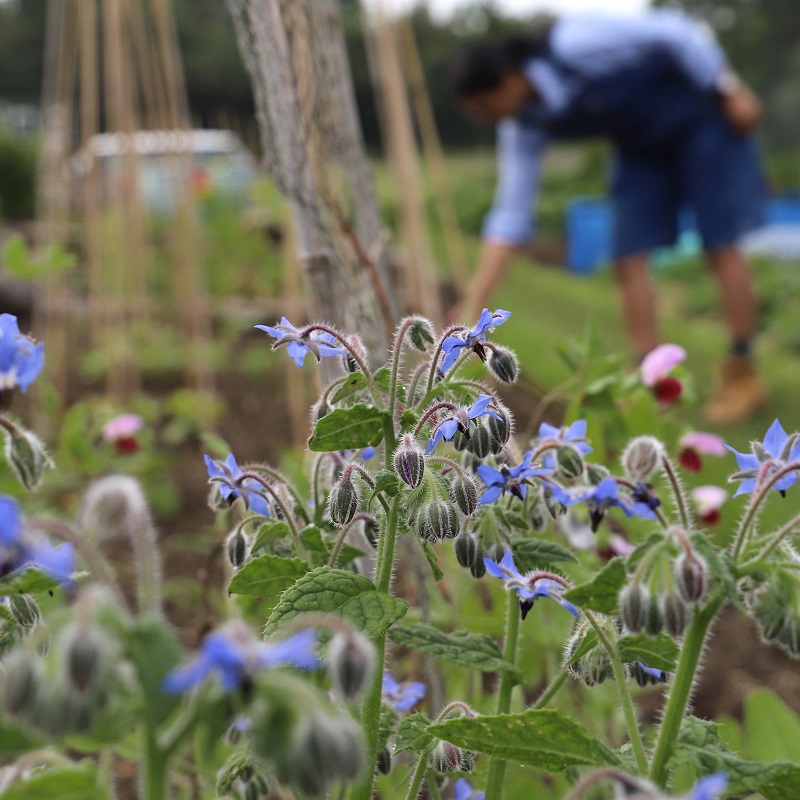
Summer months
During the summer months, it is best to water plants either early morning before the sun starts to warm the soil or late in the evening as the sun sets. Plants will be sufficiently dehydrated during these coolers times and not be able to cope with the midday heat. Greenhouse conditions shouldn’t be ignored either. Wetting the floor and leaving a bucket of water will help raise humidity and therefore the plants will transpire less moisture keeping them hydrated in over 40˙C greenhouse conditions. High humidity also keeps pests like red spider mite away. They love hot dry air not tropical warm wet air.
Keep up with feeds
As soon as flowering vegetables like tomatoes, beans, squashes, peas etc come into flower, a high potash feed like home made comfrey feed should be applied once a week, so the plants can keep up with the energy required for both healthy growth of plant as well as being a productive plant. During the summer months apply diluted nettle tea to the brassica varieties like cabbages and kale.
Maintain contents of a compost bin
A good ratio to follow: two-thirds brown and one-third greens. By summer months woody plant waste has lessened. Brown cardboard is a good substitute and can be easily shredded and layered with the ever mounting pile of summer grass clippings, pruning and kitchen waste. Hot summers can quickly dry out the decomposing matter. Each month contents of compost bins need to be turned which helps with aeration. This is also a good time to check the compost has enough moisture to help with the breakdown of the content. Come autumn months, this compost will have broken down and this dark crumbly matter will be ready to mulch over beds.
Autumn months
Now, as the plot starts to slow down in the autumn some beds will still be in production with winter vegetables but those that are cleared can be sown with overwintering varieties of green manure. Green manure not only help reduce soil erosion during wet winters. Depending on variety, it stores nutrients in the leaves or roots too. Come spring when it is dug and turned back into the soil, so are those vital nutrients. Ready for the next vegetable to take up. Winter is far from quiet for a gardener. Gardens may be still and dormant but every gardener is making plans for the the following year. Marking out and ordering seed varieties, drawing out plans and cleaning and sharping tools in readiness for spring when the whole cycle starts again.
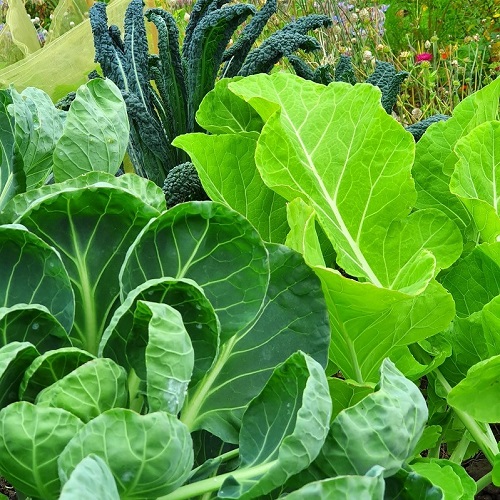
Happy Gardening!
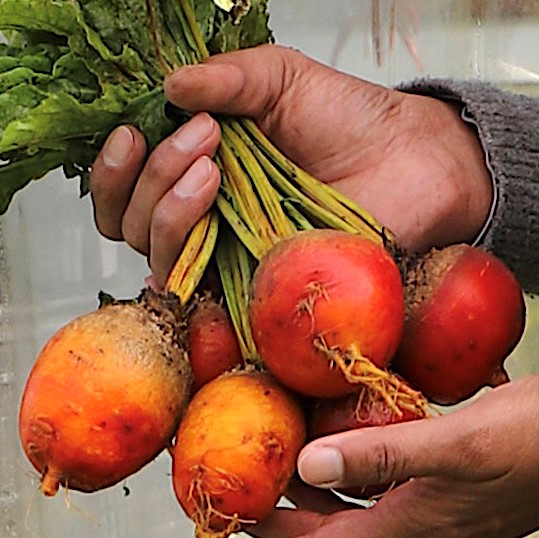
Explore the MKM landscaping range for sleepers, planters, raised beds and soil for planting.
Rekha Mistry is a presenter, garden & food writer and author of Rekha’s Kitchen Garden.

